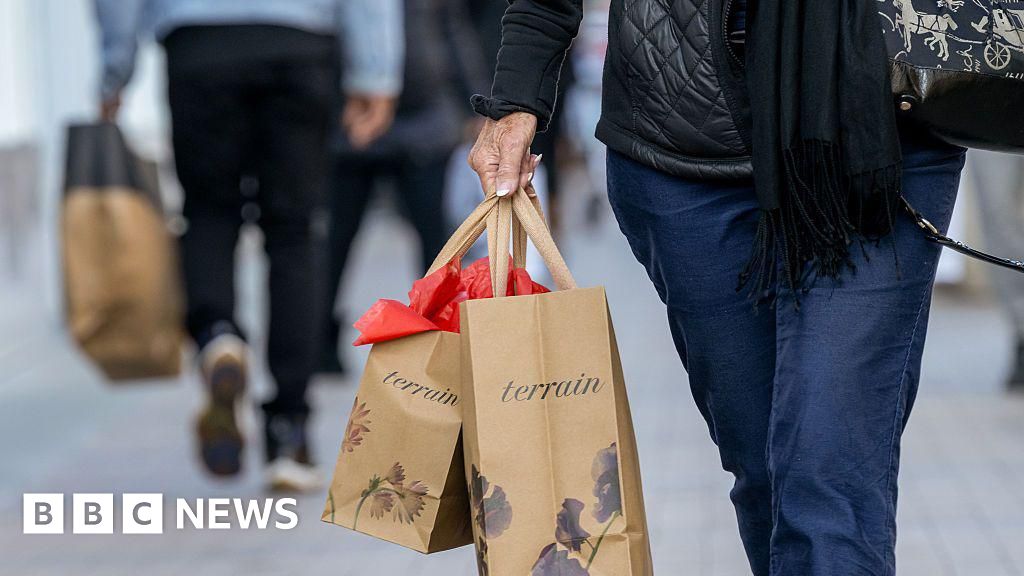Business
India’s fuel exports fall 21% in October: Domestic demand surges; HPCL and Nayara hit by disruptions – The Times of India

India’s fuel exports dropped 21% month-on-month in October as refiners prioritised domestic demand during the festive season and redirected supplies to cover gaps caused by Hindustan Petroleum Corporation Ltd’s (HPCL) refinery outage. Exports remained constrained for Nayara Energy due to sanctions.Fuel shipments fell to 1.25 million barrels per day (bpd) in October from 1.58 mbd in September, with exports of petrol, diesel, and aviation turbine fuel (ATF) all declining, according to Kpler, a global real-time data and analytics provider. Diesel, which makes up about half of India’s total fuel exports, decreased 12.5% month-on-month to 665,000 bpd.“The drop likely reflects stronger domestic demand, a greater share of output redirected to the local market, and operational constraints such as HPCL’s Mumbai refinery issues and ongoing maintenance at other sites,” said Sumit Ritolia, lead research analyst-refining and modelling at Kpler, as quoted by ET. “We may see a pickup in exports during November and December, as refiners rebalance runs and domestic demand eases slightly,” he added.HPCL had to shut one of its processing units after receiving contaminated crude from Hindustan Oil Exploration Company, creating tightness in fuel supply that private refiners helped ease.Reliance Industries and Rosneft-backed Nayara Energy experienced the most significant decline in exports. Nayara, affected by sanctions and unable to access traditional export markets, focused on the domestic market, supplying 90,000 bpd locally in October—50% higher than in September and the highest since January. Government support, including doubling train capacity for fuel transport, helped the company meet local demand.Domestic fuel consumption showed mixed trends in October. Petrol sales rose 7% year-on-year, driven by festive travel and vehicle purchases. Diesel sales fell slightly by 0.5% after a strong 6% rise in September. ATF sales increased 1.6%, while liquefied petroleum gas (LPG) sales grew 5.4%. Private refiners recorded higher sales velocity compared to state-run counterparts.
Business
US economy grows at fastest pace in two years

The US economy picked up speed over the three months to September, as consumer spending jumped and exports increased.
The world’s largest economy expanded at an annual rate of 4.3%, up from 3.8% in the previous quarter. That was better than expected, and marked the strongest growth in two years.
The figures offer a clearer picture of the state of the US economy heading into the end of the year, after data collection had been delayed by the US government shutdown.
The report showed consumer spending rising by 3.5%, compared with 2.5% in the previous quarter.
Business
Fish and chip shop offers 100 free Christmas meals in Southampton

“It’s just a way of us giving back to the community,” says a fish and chip shop owner, who is giving away 100 free meals on Christmas Eve.
Raj Khaira, from Southampton, has owned Top Catch fish and chips in Shirley for five years and says he wants to support lonely people in the area.
He says he feels lucky to have a big family but knows for some customers a conversation with a shopkeeper might be the only one they have some days.
He says the shop will give portions of sausage and chips to those in need as a way of “giving back to the people who haven’t got family around them and sometimes can’t afford a hot meal”.
Mr Khaira speaks about working in business all of his life and how much he enjoys meeting “different people every day, from different backgrounds”.
“I’ve done it since I was a young kid so it’s all I really know,” he says.
He adds that many of his customers are elderly and do not have connections over the festive period.
“Christmas for majority of us is probably going to be a joyful and busy day but for some people it’s probably going to be a quiet day,” he says.
After posting about the plans to donate on social media he received a lot of publicity and Mr Khaira is prepared to “probably do more than” 100 meals.
He says the shop has already organised a toy and present drop off to Southampton hospitals this December, with many of the donations coming from customers.
He says: “We’re only where we are as a busy shop because of our community and our lovely customers that come in and sometimes you’ve got to give back and I’m happy to do that.”
Looking back on some of the negative news reported in Shirley earlier this year with the rise in anti-social behaviour in the area, he admits he had suffered.
His shop window was smashed in the summer, but he says: “Christmas time lets us just try and forget that for a minute and just try and have a good time, and reflect back on the year and hopefully next year is going to be a better one.”
Business
Ryanair fined £224m in Italy over ‘abusive strategy’ with travel agencies

Ryanair has been fined 256 million euros (£224 million) by Italy’s competition watchdog for allegedly using an “abusive strategy” to hinder third-party travel agencies.
The regulator claimed in its ruling that the low-cost airline deliberately made it difficult for agencies to buy flights on its website, between April 2023 and at least April this year.
The Italian Competition Authority (AGCM) said: “Following a complex investigation, the authority found that Ryanair put in place an elaborate strategy affecting the ability of online and traditional travel agencies to purchase Ryanair flights on ryanair.com.
“In particular, the company’s strategy blocked, hindered or made such purchases more difficult… when combined with flights operated by other carriers and/or other tourism and insurance services.”
“These practices compromised the ability of agencies to purchase Ryanair flights and combine them with flights from other airlines and/or additional travel services, thereby reducing direct and indirect competition between agencies,” it added.
Ryanair said it would appeal the ruling and the fine, which it said was “unjustly levied”.
The Dublin-based carrier said: “Ryanair has campaigned for many years to offer consumers the lowest fares by booking directly on the ryanair.com website.
“This direct distribution model was ruled to ‘undoubtedly benefit consumers’ by the Milan Court, as recently as Jan 2024.”
Ryanair’s long-standing chief executive, Michael O’Leary, branded the ruling “legally unsound”.
He said: “This AGCM ruling is an affront to the precedent Milan court ruling, and also an affront to consumer protection and competition law.
“Ryanair has grown rapidly in Italy – and in many other markets across Europe – by always offering the lowest air fares in every single market in which we operate.
“This legally baseless AGCM Ruling, and its absurd 256 million euro fine, undermines consumer protection and competition law, and it will be overturned on appeal.”
It comes after Italy fined Ryanair 3 million euros (£2.6 million) in 2019 for its policy of charging passengers for cabin baggage, but the penalty was later overturned by an administrative court.
-

 Business1 week ago
Business1 week agoStudying Abroad Is Costly, But Not Impossible: Experts On Smarter Financial Planning
-

 Fashion5 days ago
Fashion5 days agoIndonesia’s thrift surge fuels waste and textile industry woes
-

 Business1 week ago
Business1 week agoKSE-100 index gains 876 points amid cut in policy rate | The Express Tribune
-

 Sports1 week ago
Sports1 week agoJets defensive lineman rips NFL officials after ejection vs Jaguars
-

 Business5 days ago
Business5 days agoBP names new boss as current CEO leaves after less than two years
-

 Tech5 days ago
Tech5 days agoT-Mobile Business Internet and Phone Deals
-

 Entertainment1 week ago
Entertainment1 week agoPrince Harry, Meghan Markle’s 2025 Christmas card: A shift in strategy
-

 Sports5 days ago
Sports5 days agoPKF summons meeting after Pakistani player represents India in kabaddi tournament





